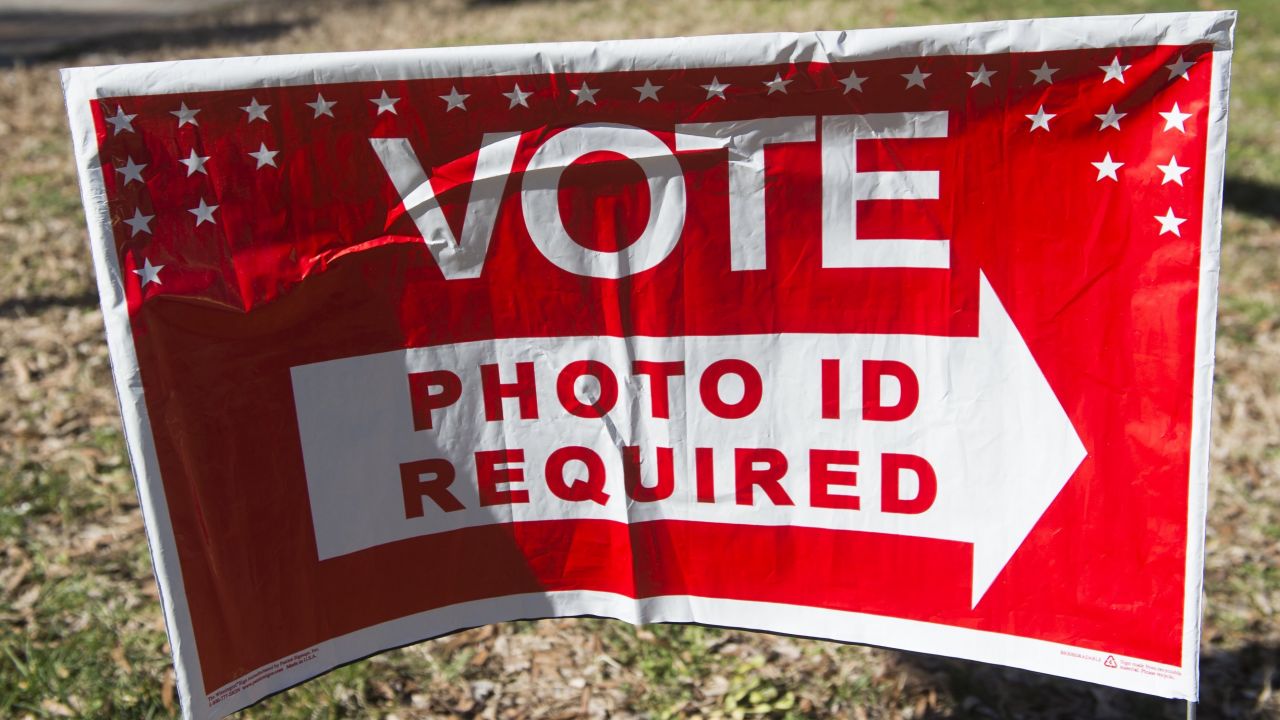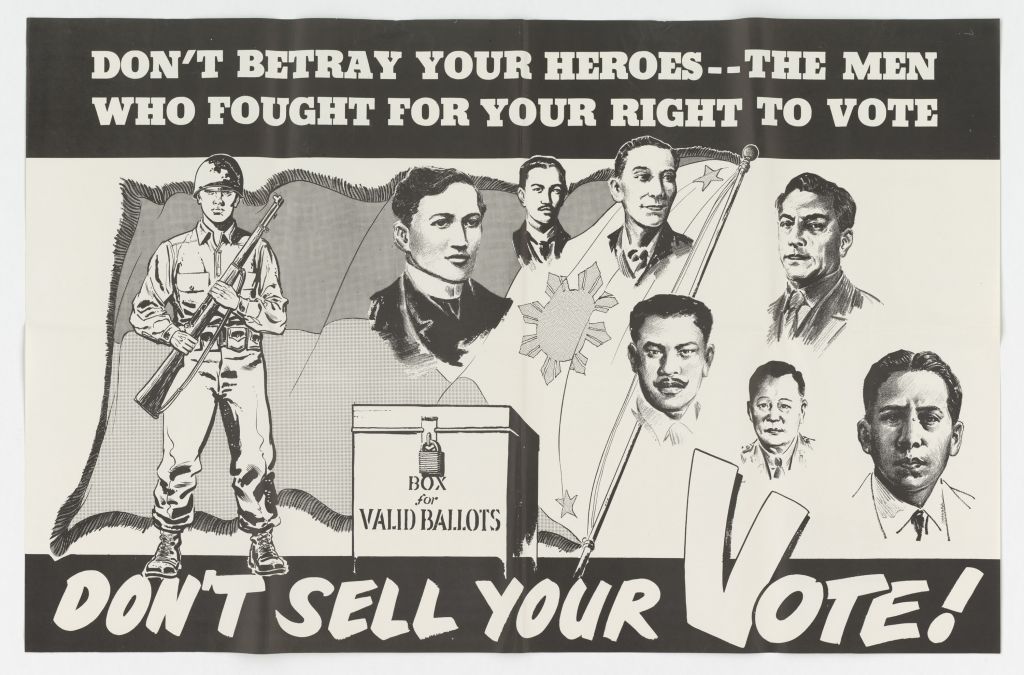
A sign alerting voters Arlington, Virginia that they would need photo ID to cast their ballots in the state's primary election. (Photo: Saul Loeb/AFP/Getty Images)

A number of questions came from readers who are concerned about voter fraud and suppression. From Nancy Barritt: “I want to know why Obama isn’t ordering an investigation of the voter fraud that is so rampant!”
Short answer: Voter fraud is not rampant. In fact, voter fraud is so rare as to be effectively nonexistent. But the claim that voter fraud threatens the integrity of American elections is widespread, and is itself a deception. We’ll get to that below. But first, let’s clear up the common confusion about what differentiates voter fraud, election fraud and voter suppression.
Define your terms
Voter Fraud: Project Vote, a nonprofit working on voter registration, defines voter fraud as the “intentional corruption of the electoral process by the voter.” It’s when a voter knowingly blows off the American principle of “one person, one vote” in an effort to influence an election. You’ve heard the fears: people will vote using a fake identity, vote more than once, sell their votes or vote when they’re actually ineligible. Voter mistakes, however, are not fraud. Even bad judgment and pranks — such as when a Florida woman registered her poodle, Cocoa Fernandez, as a Republican — aren’t fraud if they aren’t part of an effort to sway the vote.
Election Fraud: This is the most broadly defined of the three terms, and actually includes both voter fraud and voter suppression. The Department of Justice identifies 12 ways an election can be corrupted — but it’s extremely rare that this fraud is committed by the voter who lines up at the polls. It is much more likely to be at the hands of election officials, campaign workers, advocacy groups or the candidates themselves. Tactics include stuffing the ballot box, forging absentee ballots, falsifying tallies or conspiring to prevent people from voting by intimidation or other means. And that brings us to…
Voter Suppression: Voter suppression can be a hard-knuckled, partisan ploy to prevent certain people from registering to vote or getting to the polls. For example, on Election Day 2010, some 112,000 voters in mostly African-American voting districts in Maryland received robocalls authorized by the campaign manager for the Republican candidate for governor. The Election Day calls claimed that the incumbent, Martin O’Malley, had won and there was no need to vote. “Our goals have been met,” said a recorded voice, “We’re okay. Relax. Everything’s fine. The only thing left is to watch it on TV tonight.” A jury ruled that this was not just a “dirty trick” and it was not just “political speech” — it was fraud meant to swing the vote.
Voter suppression can also occur through intimidation: The state of California is investigating reports that the Siskiyou County sheriff sent deputies armed with assault weapons to investigate alleged voter fraud among members of the Hmong community, refugees who had became naturalized citizens, in the runup to the state’s primary. Some were falsely informed that it was illegal for them to vote and feared going to the polls.
But here’s the thing: Overzealous efforts to fight voter fraud can also lead to voter suppression.
A sheep in wolf’s clothing

A US propaganda poster distributed in Asia between 1950 and 1955. (National Archives)
Politicians have used concern about “rampant” voter fraud as a justification in some states for establishing new rules that make it harder to vote. They’ve put in place photo-ID laws and laws requiring voters to prove their address or that they are a citizen. In some cases, voters’ names have been purged from the rolls of registered voters. The lawmakers behind these efforts claim they want to protect the integrity of elections — but if that integrity is not actually under siege, says Rutgers political scientist Lorraine Minnite, “it is a form of suppression in the guise of an integrity issue.”
Minnite, author of The Myth of Voter Fraud, analyzed the data on alleged voter fraud, soliciting the records from every attorney general and secretary of state in the United States, as well as from 2,700 county and district attorneys and the federal government. She followed up on each alleged incident, and learned that most of those claims did not pan out. Other academic, government and news investigations have come to the same conclusion. Voter fraud is virtually nonexistent in the United States today.
Political myth vs. electoral math
So why would some states impose rules to fight a mythical scourge? It boils down to a political equation. The people who are less likely to be registered — young people, people of color, naturalized citizens and low-income people — are more likely to be Democrats. They’re also less likely to have a form of photo ID, and more likely to find it a hardship to acquire one. As a result, Republicans are inclined to support voting restrictions like ID laws, and Democrats are more likely to support lowering barriers via automatic registration, preregistration of 16- and 17-year-olds or motor-voter bills that allow eligible voters to register while receiving or renewing a driver’s license.
“There is an incredibly clear partisan divide,” says Minnite. “Both parties want to shape the rules in ways that benefit them.”
There is also unintentional voter suppression. Have you ever left a polling place because the lines were too long and slow? Been turned away because of an administrative glitch? For many voters, it’s a common experience, says Minnite. “Election rules, which change from state to state, are too complicated,” she says, “and we haven’t figured out better ways of doing this because election administrators are partisan, and the two parties are constantly fighting.”
Democrats put in rules that they think work for them, and when they are out of office, the Republicans change those rules. Citizens are left trying to keep up.
Today’s fight to vote

A polling location in Waukesha, Wisconsin, during the 2016 primary. (Photographer: Daniel Acker/Bloomberg via Getty Images)
There is a rich history of misconduct in American elections. And, according to Minnite, claims of fraud will frequently spike after any tight race leaves the losing side frustrated. But in recent years the Republican fraud crusade, in particular, has gained momentum. Journalist Ari Berman, author of Give us the Ballot, traces the anti-fraud movement’s beginning to the 2000 presidential election when the outcome in Florida was tarnished, in part, by a voter purge of alleged ex-felons.
After George W. Bush won the contested election, his Justice Department made fighting fraud a top strategy. “Panic over improper voting became a recurring riff on the right,” writes Michael Waldman, president of NYU’s Brennan Center for Justice, in his book The Fight to Vote. In 2006, Attorney General Alberto Gonzales fired nine US attorneys, and others resigned, in part because some of them refused to pursue phony voter-fraud cases. The scandal would ultimately cost Gonzales his job. “As I wrote at the time, firing a prosecutor for not prosecuting voter fraud is like firing a park ranger for not finding Sasquatch. If it’s not there, it’s not there,” Waldman told BillMoyers.com earlier this year.
After Republicans won back control of the House of Representatives in 2010, the chorus decrying voter fraud boomed even louder. And in a 2013 decision, Shelby County v. Holder, the Supreme Court struck down key provisions of the Voting Rights Act that had prevented states with a history of racist voting laws from putting in place new voting restrictions without federal permission.
A new report by The Leadership Conference, a civil rights group, finds that since that decision, North Carolina, Arizona, Florida, Georgia and Virginia, in the name of ballot integrity, have all engaged in deceptive and sophisticated practices to disenfranchise voters in ways that may impact the 2016 election.
Have an election-related question you want explained? Let us know in the comments below.




